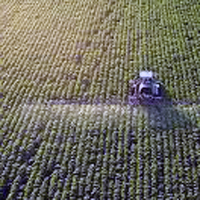Problems and perspectives in weed management

Accepted: 22 May 2021
HTML: 98
All claims expressed in this article are solely those of the authors and do not necessarily represent those of their affiliated organizations, or those of the publisher, the editors and the reviewers. Any product that may be evaluated in this article or claim that may be made by its manufacturer is not guaranteed or endorsed by the publisher.
Despite the wide use of herbicides in the past century, their use is decreasing due to rising resistance phenomena, the absence of discovery of new modes of action, and more regulatory restrictions. On the other hand, several tactics and technologies have been developed recently, providing alternatives from mechanical, cultural, robotic, and natural product use perspectives that could profitably enhance weed management within the agroecosystem and usher in a new paradigm of weed management that integrates chemical and non-chemical weed management practices. In the next future, herbicides will remain an important tool for weed management and will be increasingly complemented by other innovative tactics and tools from an integrated weed management perspective. This integrated approach would thus preserve the chemical and transgenic technology for future generations.
Highlights
- Herbicides availability is being reduced by the evolution of herbicide resistance.
- The registration of new active ingredients got more complicated with stricter regulatory restrictions.
- Innovative non-chemical tactics and tools are being developed.
- Not all the alternative weed tools and tactics have the same readiness and marketability.
- A new paradigm implies reducing herbicide inputs and integrating innovative tools and tactics.
How to Cite

This work is licensed under a Creative Commons Attribution-NonCommercial 4.0 International License.
PAGEPress has chosen to apply the Creative Commons Attribution NonCommercial 4.0 International License (CC BY-NC 4.0) to all manuscripts to be published.

 https://doi.org/10.4081/ija.2021.1854
https://doi.org/10.4081/ija.2021.1854



